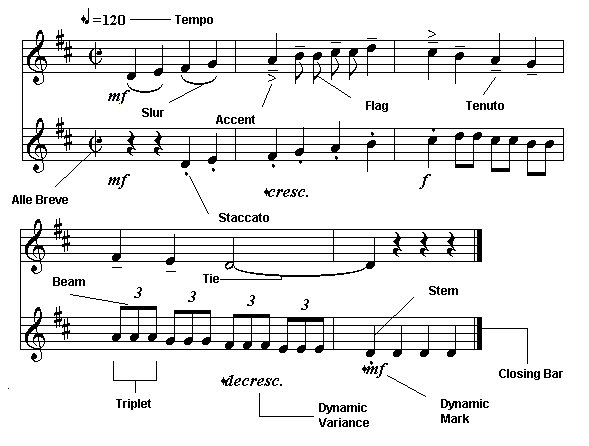Section 1: Introduction
In the following sections we are going to apply the concepts and theory that you have learned by breaking down different parts of a very complex score. Each selected excerpt was chosen because they contain all of the elements that have been covered.
You are already familiar with several terms and definitions like staff, measure, bar line, ledger line, and time signature, and via detailed figures you have seen each of them applied visually.
In this chapter, we will introduce several new terms and definitions that are a must. We will break down these terms into two groups. They are "Score Elements" and "Note Elements". This was done purposefully to help organize the concepts of sheet music.
Site Reading: to read or perform without preparation or prior acquaintance.
When it comes to site reading you will have to quickly identify the notation, expressions, notes, key, style, tempo and more when you see it. Aside from the actual playing or singing, you will perform more site reading as a musician, than any other task. Site reading is vital to musical success.
Study the following diagram closely. We have had some fun by greatly exaggerating the D Major scale to show you as many aspects of score and note elements as possible. Use this diagram for reference as you review the following terms.
Also pay special attention to the terms and definitions themselves. Not all of the elements mentioned are displayed graphically; however, their characteristics are described as to how they look, and where they are placed on the staff.

(Staff & Note Properties)